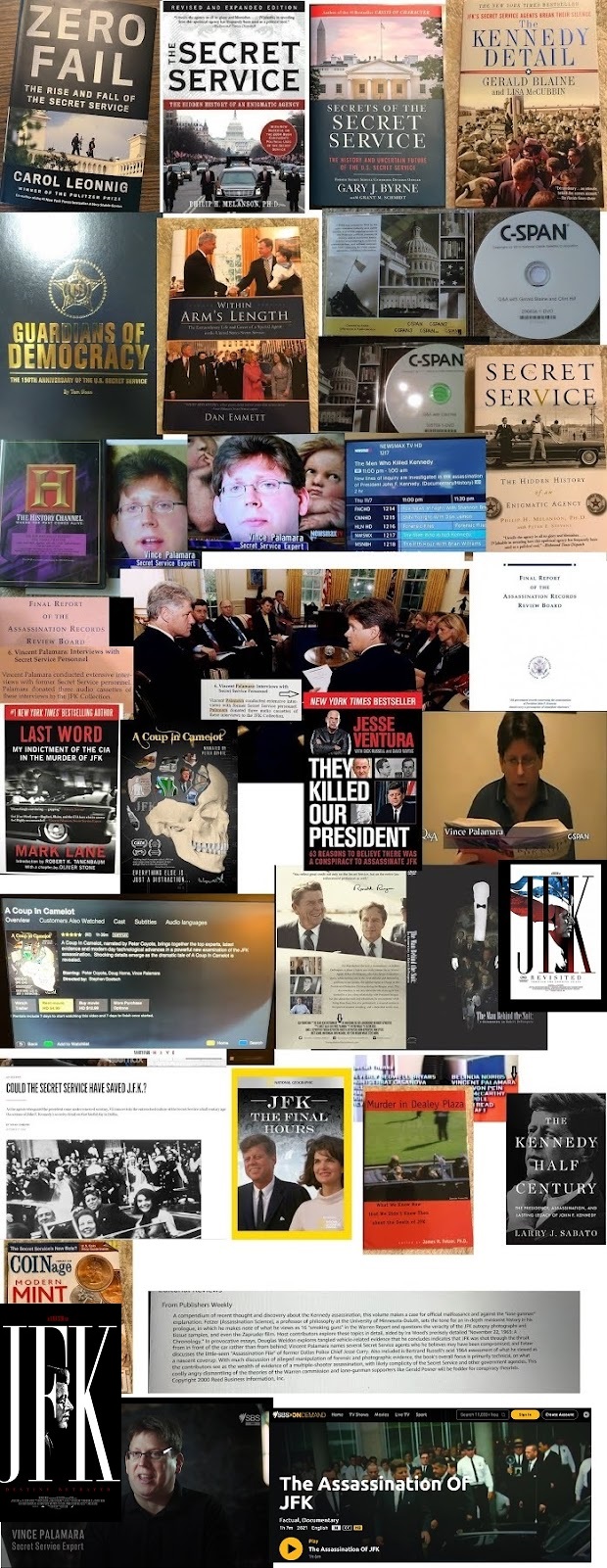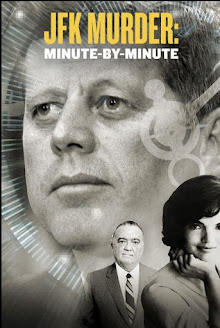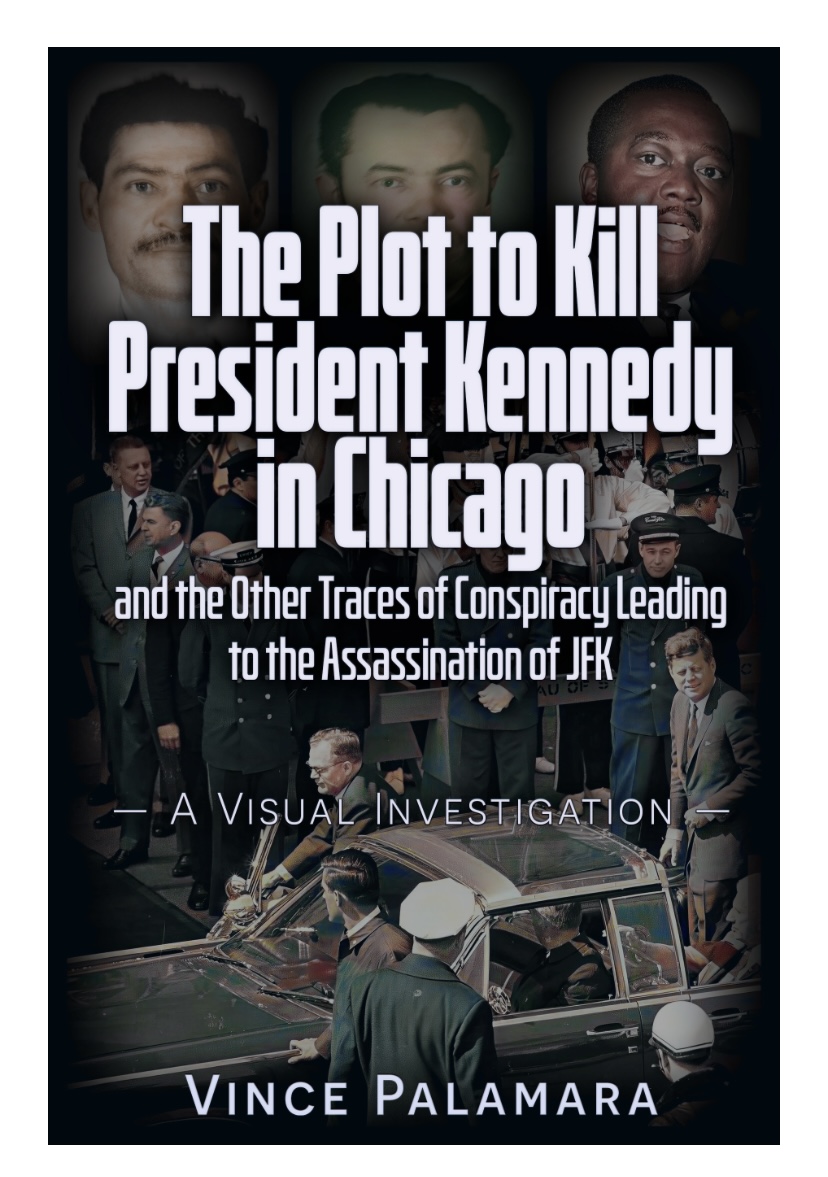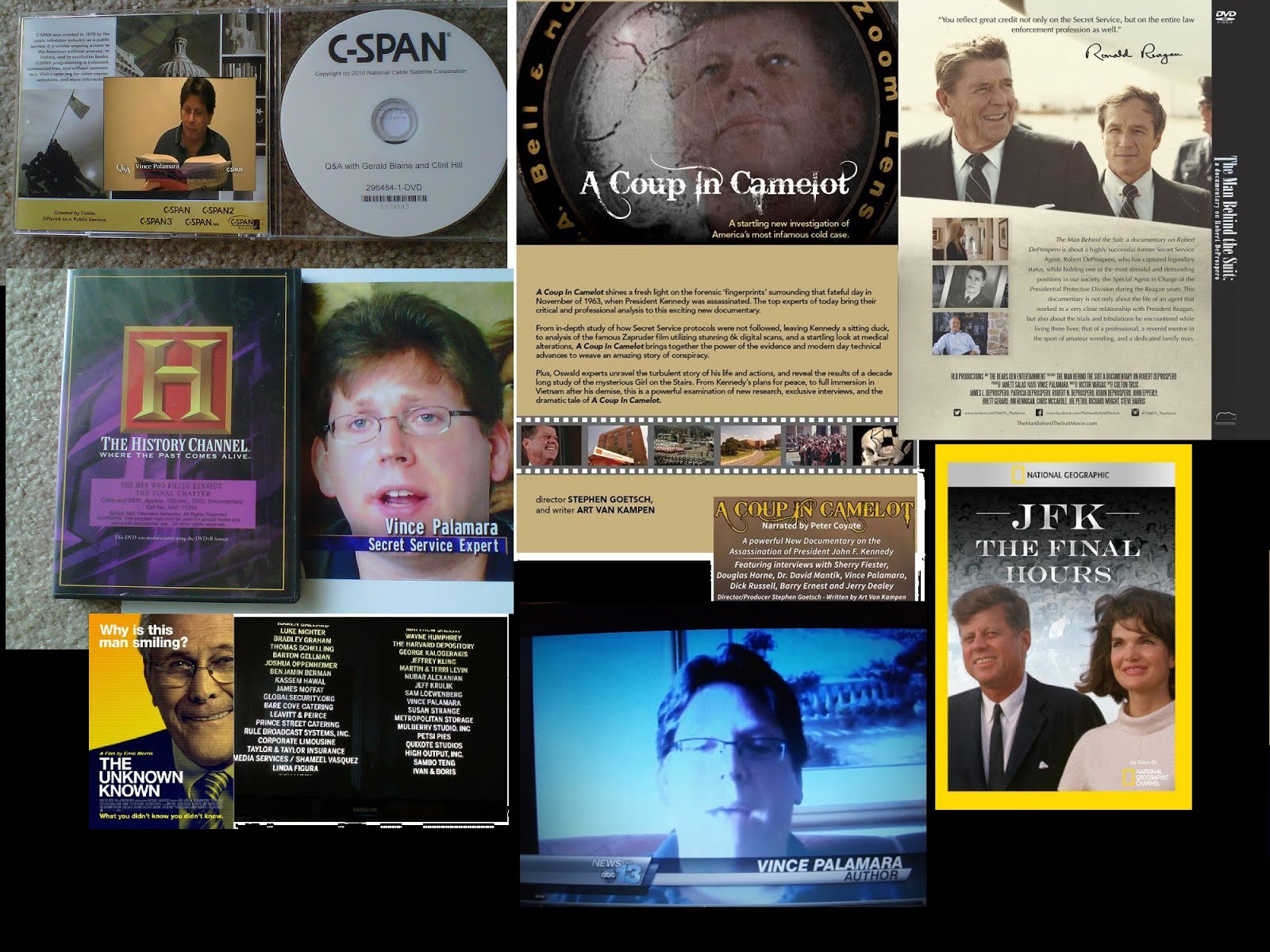The Kennedy Detail, by Gerald Blaine with Lisa McCubbin, Gallery Books, 2010.
Synopsis: A 404-page cathartic response to the often-cited failure by the U.S. Secret Service of preventing the murder of President Kennedy.
The book supports the Warren Commission’s conclusion that Oswald did it alone. Yet it raises decisive questions about just that. Two points to ponder:
1) According to the Warren Report, three shots were fired by Oswald that day: one struck both Kennedy and Governor Connally; one missed and hit bystander James Tague; a third hit Kennedy in the head. The lone-assassin scenario hinged on one bullet causing seven non-fatal wounds to both men, a feat later characterized as the “single-bullet theory.” But Blaine sees it differently. He writes, “Follow-up car driver Sam Kinney’s responsibility was to maintain his focus on the president’s car. He saw Kennedy’s reaction to the first shot…. His eyes were still focused on President Kennedy when he heard the second shot and saw Governor Connally slump toward his wife.” (P. 214)
In the next paragraph, Blaine, referring to Gov. Connally, states, “He turned forward again and was just about to look over his left shoulder to make eye contact with President Kennedy when he felt a crippling blow to his back. Like Clint [Hill], the adrenaline coursing through his veins threw his system into such shock that he never heard the sound of the second shot, the very shot that hit him.” (Ibid) Connally’s wife, Nellie, agrees, for Blaine states, “She turned to her husband just as the sound of the second shot permeated the car. Immediately the governor doubled over….” (Ibid)
Note the credibility Blaine attaches to agent Kinney and Mrs. Connally when he says, “…of all the people who witnessed the assassination, only two were able to observe and recall those five seconds with constant clarity—Sam Kinney and Nellie Connally.” (Page 218)
Blaine also describes the First Lady’s reaction: “Jacqueline Kennedy was facing to her left when the first shot was fired. As she turned to the right, toward the sound, the president slumped to the left. Not knowing what was happening, she reached her right arm behind him, around his shoulders, just as the second shot hit the governor.” (Page 216)
The implication of all this is that both Kennedy and Connally were hit by separate bullets. Admittedly, Blaine was not in Dallas that day, but his recitation of events is taken directly from those who were. Because of timing problems and the total disregard for the injury to Tague, the account Blaine describes suggests that at least four shots were fired, a scenario implied as well by the FBI in its official conclusions of December 9, 1963.
2) The Warren Report stated Kennedy was killed by a bullet that entered the back of his head and blew out a portion of his brain and skull on his right side slightly in front of his ear. A film taken by witness Abraham Zapruder shows this. So do the autopsy photographs. How then does one account for this comment, attributed to agent Clint Hill, who had rushed forward into the presidential limousine (my emphasis in italics):
“And slumped across the seat, President Kennedy lay unmoving, a bloody, gaping, fist-sized hole clearly visible in the back of his head.” (Page 217)
Or this comment attributed to Admiral George Burkley, the president's physician, at Parkland Hospital: “He was still breathing, but he had a gaping hole in the back of his head.” (Page 232)
Or this, as agents unloaded the casket from Air Force One in Washington: “Now the men who just four and a half hours earlier had seen the back of President Kennedy’s head blown off hauled the casket holding his dead body off the forklift…” (Page 258)
Or this, from Clint Hill who was called into the autopsy specifically to view the body wounds: “All Clint could see was that the right rear portion of President Kennedy’s head was completely gone.” (Page 266)
Such damage conforms with what many doctors described. It also fits with Navy Commander John Ebersole, summoned to take x-rays of the president’s body, who said in a March 8, 1978, newspaper article [Lancaster (Pa.) Intelligencer Journal] that “…the back of his [Kennedy’s] head was blown off.” So too with Thomas Robinson, the funeral director responsible for embalming Kennedy. He told the House Select Committee that he saw a small, quarter-inch wide wound to the president’s right temple, and a ragged, somewhat circular wound about the size of an orange “directly behind the back of his head.” (HSCA Document 180-10089-10178) Robinson said the wound was so large a piece of rubber had to be inserted in order to fill the void so that stitching could take place during the embalming process.
The testimonies of Ebersole and Robinson, including the drawing the funeral director made of the head wound he had described, were not published in the House Committee's final volumes.
The implications of all this imply a shot from the front, not the rear. And that doesn’t include Blaine stating, “Sam Kinney felt the warm blood of the president’s head as it sprayed over the top of his windshield.” (Page 216) Kinney, remember, was driving the follow-up car. Or Kinney, having to look “through his own blood-splattered windshield….” (Page 218)
We are also left to question why Blaine describes the back seat of the presidential limo as being “untouched” (Page 261) and the bubble-top being placed on the car at Parkland Hospital “to protect the evidence of a crime scene” (Pages 244-45) when photos show agents cleaning the back seat with a bucket of water. Or why, in several instances, the non-fatal wound to Kennedy's back is described as being, “Six inches down from the neckline, just to the right of the spinal column…” (Page 266), a position lower than where the Warren Commission would ultimately place it.
Near the end, Blaine comments, “The conspiracy theories—and that’s all they were: theories, not fact—had been born out of the inability of people to cope with the simple truth.” (Page 364)
Unfortunately, they are also born out of conflicting tales to the tragedy.
Saturday, July 9, 2011
"The Kennedy Detail": review by author Barry Ernest
Subscribe to:
Post Comments (Atom)










































![VINCE PALAMARA [remember to scroll all the way down!]](https://blogger.googleusercontent.com/img/b/R29vZ2xl/AVvXsEjSZ-Z_puqnjl3UgdiJxBenMyIMaFhmBD-PYQUsxCtFS4UF7dJQB6n32rt9a0ZqFRPmuBoukhrMZxv6LOD9GoUGPiaShO3wj_8xL98obRAsUbIf0mXutzbq7jKDrCp8Y-Y0k9rnS5ARjQQ/s1600/11.jpg)


![CHAPTER 8 OF ARRB FINAL REPORT [I AM IN THIS REPORT, AS WELL]...HMMM---THE SECRET SERVICE DESTROYS](https://blogger.googleusercontent.com/img/b/R29vZ2xl/AVvXsEimGbOuG69gW-cgAbsfjd8p8PD-subznIjcsQXUSFq560o_kiXunf9TcH0fkOqmWuK73id6m5TyVMhWcfBrPUEee6JLbvqNZKdIVQa5Drcz568Ue6GZdf_PUtLuLwPDcucv3gOn5KGBZPw/s1600/DSCF0462.JPG)




No comments:
Post a Comment